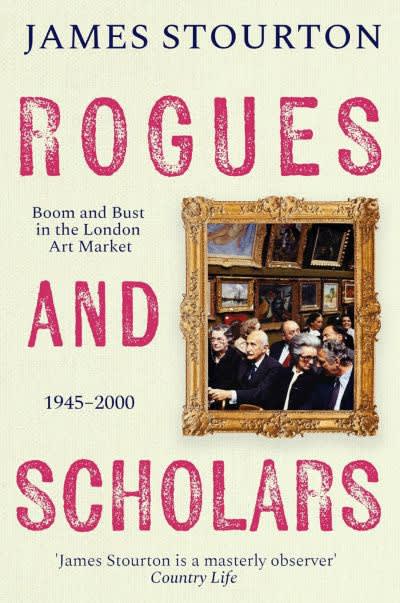 How does the art market work? - Book Review: Rogues and Scholars by James Stourton. An Irresistible Portrait of the Art World's Intrigue, Charm, and Quiet Transactions
How does the art market work? - Book Review: Rogues and Scholars by James Stourton. An Irresistible Portrait of the Art World's Intrigue, Charm, and Quiet TransactionsJames Stourton’s Rogues and Scholars: The Life and Afterlife of the Art Dealer is a gloriously entertaining and deeply insightful exploration of the often-enigmatic figures behind the global art market. Drawing from his extensive career as former chairman of Sotheby’s UK, Stourton brings to life a cast of characters whose influence, wit, and manoeuvring helped shape the art world, often more than the artists themselves.
Part memoir, part historical reflection, Rogues and Scholars operates on several levels. On the surface, it is an affectionate chronicle of art dealers from the early 20th century to the present, revealing the subtle and often paradoxical mix of scholarship, style, ambition, and cunning that defines the trade. But dig deeper, and the book becomes a subtle commentary on power, taste, legacy, and the art world’s enduring reliance on trust and relationships.
What sets Stourton’s writing apart is his ability to move effortlessly between humour and history. His prose is elegant but accessible, peppered with sharp observations and dry wit. Readers are treated to anecdotes involving aristocrats with vast but crumbling collections, dealers who moonlight as forgers, and collectors whose obsessions bordered on the pathological. The title: Rogues and Scholars, could not be more fitting. The world Stourton paints is inhabited by individuals who blur the line between erudite connoisseurship and cheeky opportunism, making the business of art feel at times like a high-stakes, beautifully choreographed dance.
Stourton’s respect for the profession is clear, even as he peels back its layers. He acknowledges that while some dealers are driven by money, many are true aesthetes and historians, passionate about beauty, preservation, and storytelling. This nuanced view rescues the art dealer from the popular stereotype of the slick middleman and positions him, or her, as a central, even noble figure in the narrative of cultural history.
And yet, what lingers long after the final page is turned is not just the vivid gallery of personalities, but the underlying truth that the art world, for all its modernisation, still runs on the fuel of discretion and relationships. While online platforms, major auctions, and international art fairs have democratised access and visibility, the core mechanics of the high-end art market remain remarkably traditional.
In fact, one of the book’s most revealing implications is that most serious art collectors continue to buy privately, often through dealers they have known for years, even decades. These dealers are not merely vendors; they are advisors, confidants, tastemakers, and sometimes guardians of a collector’s legacy.
This reality persists even in an age of digital transparency. Why? Because trust cannot be coded. Provenance, condition, and market insight are all essential factors in an acquisition, and collectors overwhelmingly prefer to rely on the expertise and discretion of someone they know. The art dealer’s role has evolved, yes, but their position as trusted gatekeepers remain firmly intact.
Private dealers such as Andipa, based in London, exemplify this model. With a history stretching back over half a century, Andipa has become synonymous with discretion, integrity, and deep art historical knowledge, qualities that Stourton himself lauds repeatedly throughout Rogues and Scholars. For seasoned collectors, relationships with firms like Andipa offer something auction houses often cannot: privacy, continuity, and a tailored collecting experience. Whether dealing in Old Masters, Modern art, or contemporary icons like Banksy, such dealers often curate opportunities that never reach the open market.
Stourton would likely agree that these off-market transactions are where much of the art world's most meaningful action still occurs. Not because they are secretive in a nefarious sense, but because they are human, rooted in dialogue, mutual respect, and shared aesthetic vision. These are not just purchases; they are collaborations between dealer and collector, often unfolding over years, even lifetimes.
It is also worth noting that, while the public spotlight often shines on blockbuster sales and high-profile exhibitions, it is in these quieter spaces, private viewings, personal consultations, thoughtful placement of works, that real collecting happens. Dealers like Andipa build long-term strategies for their clients, advising not only on acquisition but also on conservation, provenance research, and eventual resale, if needed. This kind of holistic engagement is a rarity in today’s transactional culture, and it’s part of what makes the private dealer model so resilient.